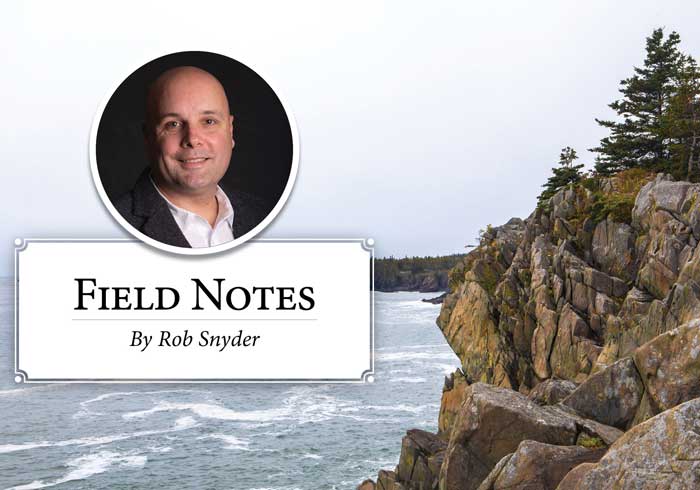A good friend of mine often says that when faced with difficult situations, “The only way forward is through.” To say that we are faced with difficult situations right now would be the understatement of the century.
One of the greatest challenges we face at the moment is a crisis in confidence in elected leaders at all levels. When people lose trust in leadership, whether it be local, state, or national, we all lose.
For example, in Maine, we know the private sector alone will not bring broadband to all of our rural communities. We need strong governmental partners at the local, state, and national level to garner the resources to solve this problem. Our local leaders work tirelessly to build support in a community (or at least not opposition) for a common vision. When achieved, our communities become more efficient and effective partners for state, federal, or private sector partners.
Our local leaders work tirelessly to build support in a community (or at least not opposition) for a common vision.
The opposite can also be true. At a broadband conference hosted by the Island Institute in 2019, private sector representatives estimated a 30 percent added cost to their projects when community engagement processes fail. When engagement processes are run badly, communities lose confidence in leadership and the cost of addressing challenges goes up, both figuratively and literally.
The skills for engaging a diverse group in problem solving is fundamental to local leadership and, I would argue, leadership at every level. Methods of community engagement—and the concern for doing it well—can vary widely. In many cases, the approach to local problem solving and community engagement can be tied back to vastly different skills and experiences learned across generations.
If we look back historically, in broad general terms, up until the 1980s leadership was assumed to be monolithic in nature. Leaders projected a singular authoritative voice, held a vision for the future, and commanded respect from atop a hierarchy. This was also a time when male leaders dominated.
Leaders who came to power during this time, and who may remain in power today, learned behaviors, patterns of communication, and organizational structures they believed were most effective.
Against this historical backdrop comes a new generation aspiring to leadership. Today’s leaders are emerging in a world defined by unprecedented change. These leaders see a need for greater collaboration, transparency, and inclusivity. They are building flexible organizations that can have an impact in this environment.
Professionals in their 20-40s seek leaders who have the skill to create a shared vision, and who are able to distribute decision making and accountability. Today’s emerging leaders are aware of how power is wielded and how the techniques of power work to keep some at a disadvantage while allowing others to hold and retain power.
I’ve lived at the crossroads of these two leadership paradigms over the past two decades and have found that the differences in generational expectations of leadership can lead to significant misunderstandings and mistrust.
A common refrain among older elected island and coastal leaders is that “Younger people are not stepping up.” This begs the question, why?
For the past 18 years, I’ve been a part of work that’s attempted to help elected leaders “find,” “recruit,” and “build the capacity” of younger people to step into community leadership. The results have been mixed at best. The problem may be that roles are defined as they were in the past
When younger people see they can make change, they are more likely to participate. If this is true, then what must we do?
Perhaps the techniques and technologies for running towns need to change. For example, can we look at how, in the pandemic, towns are successfully deploying social media to garner more audiences for town conversations? Can towns change how and when they meet and offer more asynchronous opportunities for participation so that the couple juggling three jobs and young kids can get involved? Do laws need to change to make it easier to attract younger leaders?
Even with such changes, emerging leaders need to develop a difficult skill set that includes an older, experienced generation. For example, when appealing for more inclusive and transparent online platforms in town government, a young leader will need to explain how it is still possible to make clear and efficient decisions. It will be important to demonstrate that opening up to public criticism will not undermine, but can build trust in decisions.
Ultimately, there are ways to ensure far more inclusive public processes, and get work done in a timely manner. The skills involved in doing so take time to develop but the outcome could bridge two generational experiences that have much to offer one another – rather than being flashpoints for disappointment and disenfranchisement.
Our communities are a microcosm of society writ large. We are all looking to those who can help solve real world problems with practical solutions – to create progress. We all want someone who can show us that there is a light at the end of the tunnel. Along the coast of Maine, we have an opportunity and an imperative to show how to bridge generational differences and appeal to the shared concern we have to strengthen our communities. The question of leadership will persist long after the election, and I believe our communities have something very crucial to contribute to the conversation.
This piece is being written prior to the election but will be on newsstands after it. Please know that this writing does not presuppose any election outcome or the potential disruptions that will follow. Instead, it is a personal reflection on where we stand as a coast and what we might consider in order to keep moving forward while the world continues to change around us.
Please vote.





